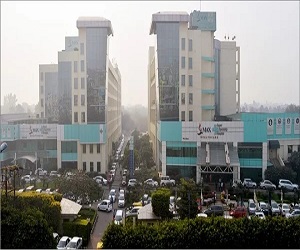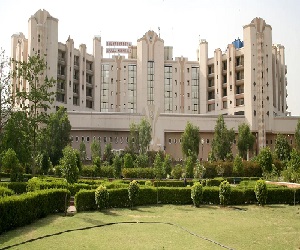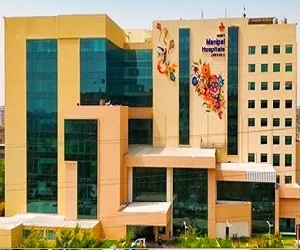Overview
Transcatheter aortic valve replacement (TAVR) has brought about a significant shift in how we manage aortic valve disease, providing a less invasive option compared to traditional open-heart surgery. With TAVR, a new valve is carefully guided through a catheter inserted into a blood vessel, taking the place of the old, damaged valve and allowing blood to flow properly again. This approach has had a profound impact on numerous patients, especially those who were at high risk for surgery, offering them a chance at improved health and quality of life.
Understanding aortic valve stenosis
Aortic valve stenosis occurs when the aortic valve narrows, making it difficult for blood to flow from the heart to the body. This narrowing can cause symptoms like chest pain, difficulty breathing, and feeling tired. While age-related wear and tear are the main causes, it can also happen from birth or due to other health issues.
In the past, aortic valve stenosis treatment typically required open-heart surgery, which involves opening the chest to reach the heart and replace the affected valve. Though effective, this surgery poses substantial risks, particularly for older individuals or those with existing health issues. Enter TAVR treatment in India, offering a transformative alternative.
What is TAVR and how does it work?
Transcatheter Aortic Valve Replacement (TAVR) is a minimally invasive procedure available in India, aimed at replacing a damaged aortic valve with a new one. This innovative approach involves inserting a catheter into a blood vessel, through which the new valve is carefully guided to the heart. Usually crafted from biocompatible materials, the new valve is positioned using sophisticated imaging methods.
In the TAVR procedure, a minor incision is made in either the groin or chest. Through this opening, a catheter is carefully inserted and guided through the blood vessels until it reaches the aortic valve. The new valve, compressed and attached to the catheter, is precisely positioned within the damaged valve. Once in place, the new valve is expanded, displacing the old valve and assuming its role, thereby restoring proper heart function.
Benefits of TAVR compared to traditional surgical options
TAVR treatment in India provides numerous advantages over traditional open-heart surgery for aortic valve replacement. Firstly, TAVR is minimally invasive, eliminating the need for a large chest incision and reducing the associated risks of open-heart surgery. This leads to shorter recovery times, less pain, and fewer postoperative complications.
Additionally, TAVR is frequently deemed a suitable choice for patients considered high-risk or ineligible for traditional surgery. This encompasses older individuals, those with multiple health conditions, and individuals in poor overall health. TAVR offers a crucial alternative for these patients, granting them the chance to enhance their quality of life without encountering the risks associated with open-heart surgery.
Risks and complications associated with TAVR
Although TAVR is generally regarded as safe and efficient, like any medical intervention, it does entail certain risks and potential complications. Among the common risks are bleeding, infection, and the possibility of damaging blood vessels or the heart during catheter insertion. Additionally, there is a slight risk of stroke, valve leakage, or the necessity for a subsequent procedure in the future.
To minimize these risks, thorough assessment and meticulous patient selection are essential. An experienced and dedicated team comprising cardiologists, cardiac surgeons, and imaging specialists evaluates each patient’s suitability for TAVR. Preoperative tests and imaging studies play a crucial role in identifying potential risks and ensuring that the procedure is conducted with the utmost safety and precision.
Preparing for a TAVR procedure
Before your scheduled TAVR procedure, your medical team will offer thorough instructions on how to prepare. This could involve adhering to specific dietary restrictions, making adjustments to your medications, and discontinuing certain medications before the procedure. Depending on your individual health status, additional tests or consultations may be necessary to evaluate your overall health and determine the best approach for your TAVR procedure.
The TAVR procedure step-by-step
During the TAVR procedure, which usually occurs in a specialized cardiac catheterization laboratory or an operating room, you will receive anesthesia to ensure your comfort and pain-free experience. The steps involved in a TAVR procedure are as follows:
- Access site preparation: The medical team will begin by cleaning and sterilizing the access site, typically located in the groin or chest area, where the catheter will be inserted.
- Insertion of the catheter: A small incision is made at the access site, and a catheter is carefully inserted into a blood vessel. This catheter is then guided through the blood vessels toward the heart.
- Placement of the new valve: The new valve, compressed onto a balloon, is meticulously positioned inside the damaged aortic valve using advanced imaging techniques. Once in place, the balloon is inflated, expanding the new valve and securing it firmly in position.
- Testing and adjustments: The medical team will carry out several tests to verify the proper functioning of the new valve and to ensure there are no leaks or complications. They will make any necessary adjustments to optimize the valve’s performance.
- Catheter removal and site closure: Once the procedure concludes, the catheter is meticulously withdrawn, and the access site is closed using dissolvable sutures or a closure device. Pressure is applied to the site to minimize bleeding.
After Procedure
Following the TAVR procedure, you will be closely monitored in a recovery area for a period to ensure your vital signs remain stable and there are no immediate complications. The duration of this monitoring period may vary depending on your individual circumstances.
After the TAVR procedure, most patients notice a significant improvement in their symptoms. Yet, it’s crucial to follow the instructions provided by your medical team for post-procedure care. This may involve taking medications, adhering to physical activity restrictions, and attending follow-up appointments.
TAVR Surgery cost in India are as follow
| Treatment | Cost in USD | Hospital Stay |
| TAVR (Transcatheter Aortic Valve Replacement) Surgery | 15000-25000 | 3-5 Days |
| CABG Minimally Invasive Surgery | 6000-7000 | 7-8 Days |
| Heart Valve Replacement (MVR/AVR) | 7000-8000 | 7-8 Days |
| Heart Transplant | 60000 | 7-8 Days |
| CABG Surgery/Heart Bypass Surgery | 4000-6000 | 7-8 Days |
Frequently Asked Questions
Q:What preparation is required before TAVR (Transcatheter Aortic Valve Replacement) Treatment?
A:Before TAVR treatment, patients undergo medical evaluations, imaging tests, and medication reviews. They may need to fast, undergo blood tests, and provide informed consent. Following specific pre-procedure instructions is crucial for a successful outcome.
Q:How long does the procedure typically take?
A:The duration of a TAVR (Transcatheter Aortic Valve Replacement) procedure typically ranges from 1 to 3 hours. However, the exact time can vary depending on factors such as the patient’s specific condition, the complexity of the case, and any unforeseen complications encountered during the procedure.
Q:What is the success rate of TAVR treatment in India?
A:The success rate of TAVR (Transcatheter Aortic Valve Replacement) treatment in India varies depending on factors such as the patient’s overall health, the expertise of the medical team, and the specific characteristics of the case.
Q:How do I choose a hospital for TAVR (Transcatheter Aortic Valve Replacement) procedure in India?
A:Kindly share your reports.














